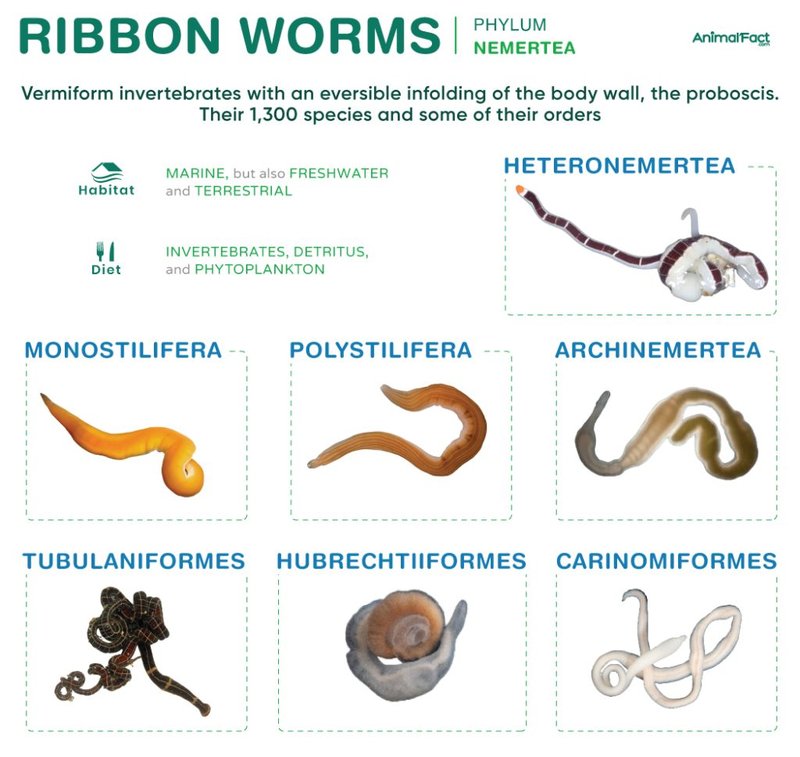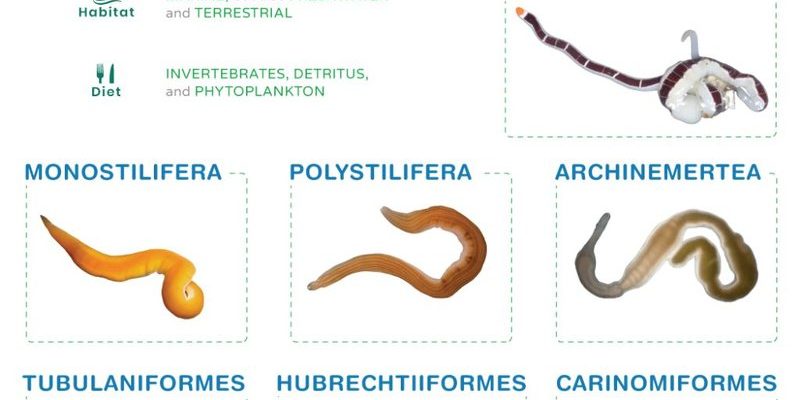
Now, here’s the thing: ribbon worms aren’t just your typical garden variety worms. They’re unique in their biology and behavior, offering a glimpse into the diversity of life on Earth. Imagine having a stretchy, muscular body that can extend and retract, all while possessing a long, sticky proboscis ready to snag prey! Stick around, and I’ll take you on a journey through the world of ribbon worms, where we’ll explore their anatomy, habitat, diet, and much more.
What Are Ribbon Worms?
Ribbon worms, or *Nemerteans*, are a diverse group of animals found primarily in marine environments. They range from just a few millimeters to several meters in length. Their bodies are soft and flattened, resembling a ribbon or a strand of pasta—hence the name. These fascinating creatures belong to one of the lesser-known groups of invertebrates, making them somewhat of a hidden gem in the animal kingdom.
What sets ribbon worms apart from other worms is their unique ability to extend their bodies. You might think of them like a trampoline; they can stretch out to catch prey and then contract back to their original size. This remarkable feature is due to their muscular structure, which allows for incredible flexibility. Plus, with a long proboscis that can be shot out to capture food, they sure know how to make a meal happen!
Body Structure and Adaptations
Let’s take a closer look at what makes ribbon worms so special. Their body is divided into three main parts: the head, trunk, and tail. The head often has eyes and sensory organs, giving them a good sense of their environment. Imagine having eyes that can spot your next meal from a distance—pretty handy, right?
One of the most interesting aspects of ribbon worms is their proboscis. This tube-like structure can shoot out quickly to snag prey. Think of it like a lasso in the wild—quick, precise, and effective. The proboscis is not just for show; it’s lined with a sticky substance to hold onto whatever comes its way, whether it’s a small fish or a crustacean.
Additionally, ribbon worms possess a unique structure called the rhynchocoel, a fluid-filled cavity that houses their proboscis. This adaptation is quite handy, allowing them to shoot out their feeding tool with impressive speed. All these features work together to make ribbon worms incredibly well-suited for survival in various aquatic habitats.
Habitat of Ribbon Worms
You might be wondering where these creatures hang out. Ribbon worms can be found in a variety of environments, primarily in marine settings. They thrive in both shallow coastal waters and deeper oceanic regions. Some species even venture into estuaries and freshwater habitats—talk about versatility!
These worms prefer sandy or muddy substrates, as they often burrow into the sea floor. Imagine them cozying up in a little hole, waiting patiently for their next meal. Beach lovers might spot ribbon worms at low tide, wriggling in the sand or gliding through the water. Their presence indicates a healthy ecosystem, as they play a crucial role in the food chain.
While many species prefer saltwater, some ribbon worms can be found in brackish or freshwater environments. This adaptability contributes to their spread across various regions, from temperate coasts to the tropics.
Feeding Habits of Ribbon Worms
When it comes to food, ribbon worms are opportunistic predators. They mostly feed on small marine animals like crustaceans, worms, and even juvenile fish. Here’s how they get their meals: after extending their proboscis to capture prey, they reel it back in and use their mouth to consume it. It’s a fascinating feeding strategy that showcases their unique adaptations.
What’s more, ribbon worms secrete digestive enzymes through their proboscis. This means they can begin breaking down their food even before it enters their bodies, maximizing the nutrients they can absorb. You could say they have a head start on their meal, which is a pretty cool trick!
This predatory behavior makes ribbon worms important players in their ecosystems, helping control prey populations and serving as food for larger animals. So, even if they seem small and unassuming, they hold significant ecological roles.
Reproduction and Life Cycle of Ribbon Worms
Reproduction in ribbon worms is as intriguing as their feeding habits. Most species utilize external fertilization, where males and females release sperm and eggs into the water. They often gather in large groups, creating a beautiful spectacle as they spawn.
Once fertilization occurs, the eggs develop into larvae that drift with ocean currents before settling down. This strategy allows the young to disperse over great distances, which helps avoid competition for resources. As the larvae grow, they undergo metamorphosis, transforming into the adult forms we recognize as ribbon worms.
Interestingly, some species can also reproduce asexually through fragmentation. If a ribbon worm gets cut, it can regenerate lost parts or even form a new individual from the severed piece. This ability to regenerate is quite remarkable and makes ribbon worms resilient creatures.
Ecological Importance of Ribbon Worms
You might be surprised to learn just how important ribbon worms are to marine ecosystems. As predators, they help regulate populations of smaller animals, ensuring a balanced food web. They also serve as prey for larger fish and sea birds, maintaining a flow of energy within their habitats.
Additionally, they play a vital role in nutrient cycling. As they consume and break down organic material, they contribute to the overall health of the ecosystem. Their burrowing activities help aerate the sediment, promoting healthier marine environments.
In some regions, ribbon worms are also indicators of water quality. Their presence or absence can tell scientists a lot about the health of an ecosystem. If you see ribbon worms thriving in an area, it’s usually a sign of a healthy, thriving marine environment.
Curiosities and Misconceptions About Ribbon Worms
Despite their fascinating characteristics, ribbon worms are often misunderstood. For example, people sometimes confuse them with other types of worms, like earthworms or flatworms. While they share similarities, ribbon worms belong to a distinct phylum and have unique features that set them apart.
Another common misconception is that all ribbon worms are harmful. In reality, most species are harmless to humans. They don’t pose any threat, and some might even contribute positively to their ecosystems. So, next time you see one, consider how important it is to the environment rather than being afraid.
Finally, ribbon worms are often overlooked due to their elusive nature. Many people don’t realize these creatures exist right beneath the waves. Bringing awareness to these unique animals can help foster appreciation for marine biodiversity and the need to protect our oceans.
In conclusion, ribbon worms, or nemerteans, are a captivating group of animals with unique features, interesting life cycles, and vital ecological roles. Understanding these strange yet incredible creatures can deepen our appreciation for the marine world and remind us of the diverse life that exists just beyond our shores. Whether you’re a seasoned marine enthusiast or just starting to explore the wonders of ocean life, ribbon worms are certainly worth getting to know!

